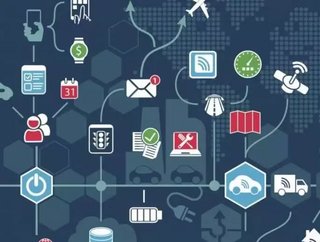IoT and delivery: How pallets, packages and products are talking back

By Ian Jindal, experienced multichannel retailer and Editor-in-Chief of InternetRetailing
The Internet of Things (IoT) promises big things in the world of consumer goods, but even bigger things in the evolution of the supply chain. Research firm Gartner says IoT will completely change the world of delivery operations and that a thirty-fold increase in Internet connected physical devices by the year 2020 will significantly alter how the supply chain works. Morgan Stanley estimates that 75 billion devices will be connected to the IoT by 2020.
The numbers are certainly mind-blowing, but what will its impact on the supply chain actually be? In a word – exciting. IoT is allowing the supply chain to come alive. It allows for much greater tracking and intelligence throughout the supply chain than has ever been possible before – connecting people, processes and data via devices and sensors. In fact many predict that IoT will lead to a complete redesign of many existing supply chain processes.
But its biggest impact will be to allow both businesses and customers greater visibility of their products and parcels than ever before.
This has always been an area in which retailers have struggled. They have looked to work closer with supply chain partners and delivery operators to improve visibility and trackability, but essentially they have simply been hampered by their remoteness. They rarely own the supply chain or delivery operations and so their ability to ‘see’ where items are has been limited. But this is changing fast.
RFID enabled pallets are nothing new, but the ability to combine this with sensor devices for a much richer range of information is. Today, goods can not only be tracked via GPS but sensor devices can also now track and combine other data and influence upon the transit of a package – from weather conditions and traffic jams to the temperature of a parcel.
Within the warehouse and at pallet level, warehouse stock can be better monitored and more intelligently tracked when in transit. This will allow for supply chain companies and retailers to work together to better improve efficiencies through things like reducing fuel costs by optimising routes.
First lead by Staples and later by Amazon and Ocado, now, for instance, the use of connected robots in warehouses to move racks of merchandise around and help prepare online orders for shipment is a growing trend.
Grocery etailer Ocado is also leading the way in terms of implementation of IoT to optimise their delivery process. To manage their delivery fleet efficiently, the brand equips delivery vans with a range of IoT sensors logging valuable information such as the vehicle’s location, wheel speed, engine revs, braking, fuel consumption and cornering speed. The vans then stream back this data in real time and is later fed by Ocado engineers into the routing systems. In the future, the selection of the best route will bear this information in mind. It will now take into account the challenges and advantages of prior routes, as well as potential traffic jams and road closures, the day of the week or if there are school holidays, best parking location and reducing fuel consumption, amongst other things.
The adoption of IoT not only offers benefits to retailers, customers also profit from huge advantages. With adoption of new technology, consumers also obtain the ability to more closely monitor parcels and to find out not only where they are but also what is happening to them, making the use of IoT particularly exciting in the last mile scenario.
Indeed the end of January saw a new IoT device that does just that. The ParceLive is a postcard sized device that is put into the parcel at the point of distribution. As well as GPS tracking it can also monitor everything from position of parcel to temperature and light – meaning that those sending and receiving the parcels can see both where the item is and how it is being handled en-route and whether it’s been opened or not.
This is a big step up from simply tracking the arrival of a product and, whilst realistically it’s only really applicable to high value, fragile and time or temperature sensitive packages, it shows the exciting new capabilities that the integration of IoT can bring into the supply chain and particularly the final mile.
IoT within the home will also revolutionise the ways in which customers buy, with products directly communicating with order systems when replenishment is required. It’s already happening with Amazon’s launch of its Dash Button last year, allowing customers to reorder goods at the point of use but eventually such functionality will be built into products themselves
Now that really is IoT bringing the supply chain to life.
Adoption of IoT in fulfilment and delivery as well as all the latest technology in packaging, parcels, stock management and warehousing will be presented at this year’s eDelivery Expo (EDX), at the NEC Birmingham on the 5th and 6th April.
World-class speakers from brands including Sainsbury’s, Harrods, ASDA, John Lewis and Ocado, will lead two days of inspiration learning and networking. They will be sharing insights and best practice on what the future has in store for fulfilment and how retailers can improve their operations strategy and performance to navigate the challenging times ahead.
Find out more and register for free at www.edeliveryexpo.com
The January issue of Supply Chain Digital is live!
Follow @SupplyChainD on Twitter.
Supply Chain Digital is also on Facebook.






